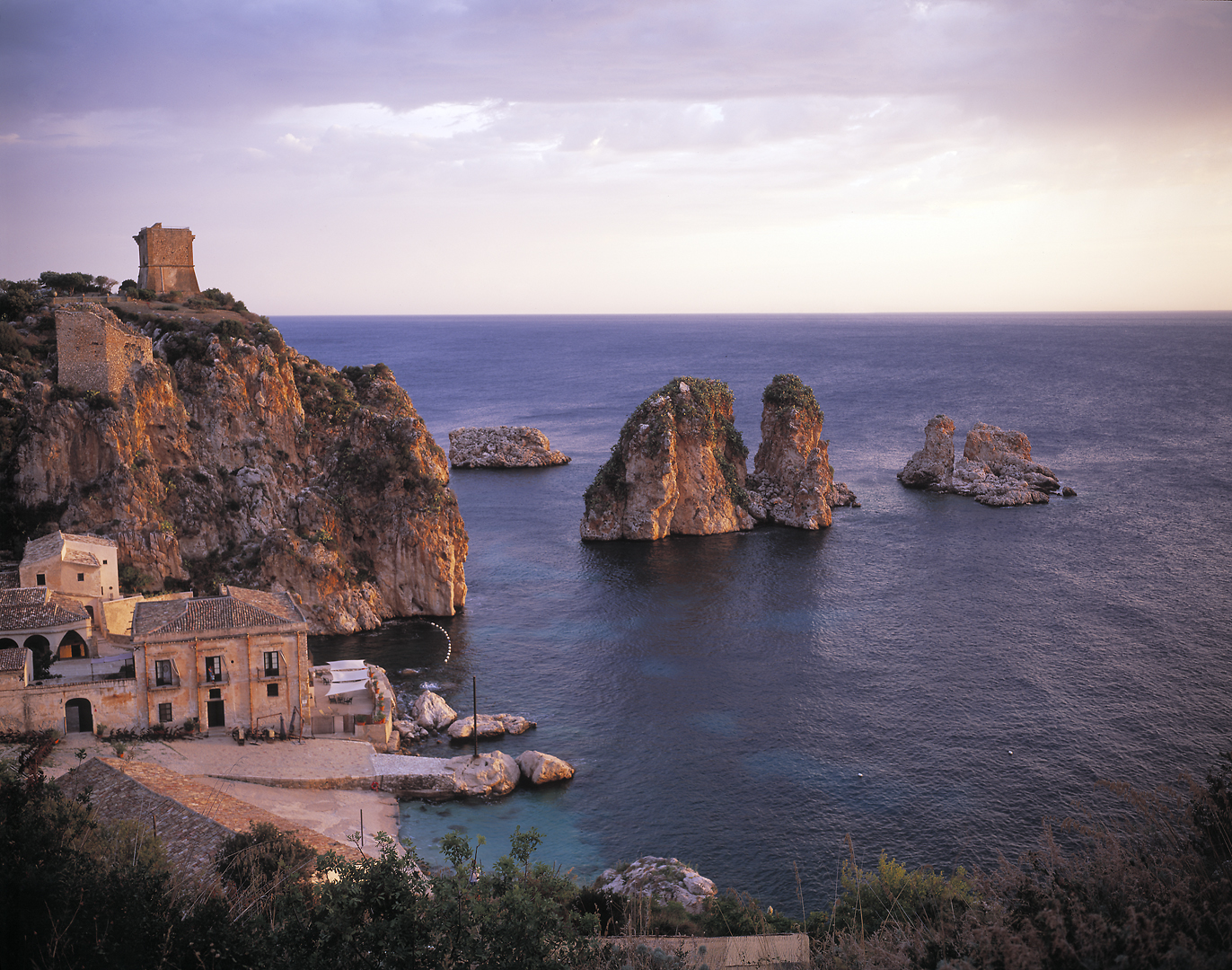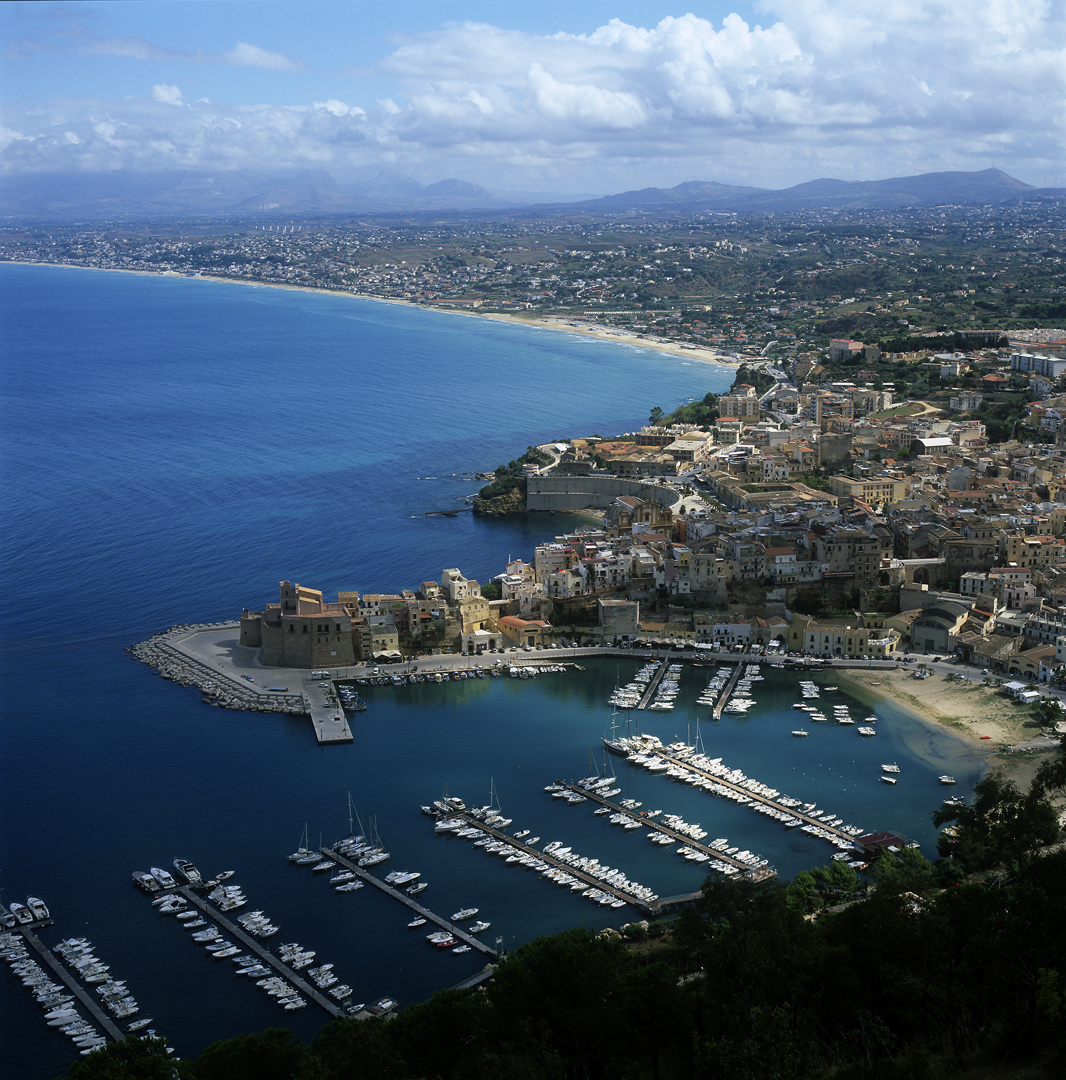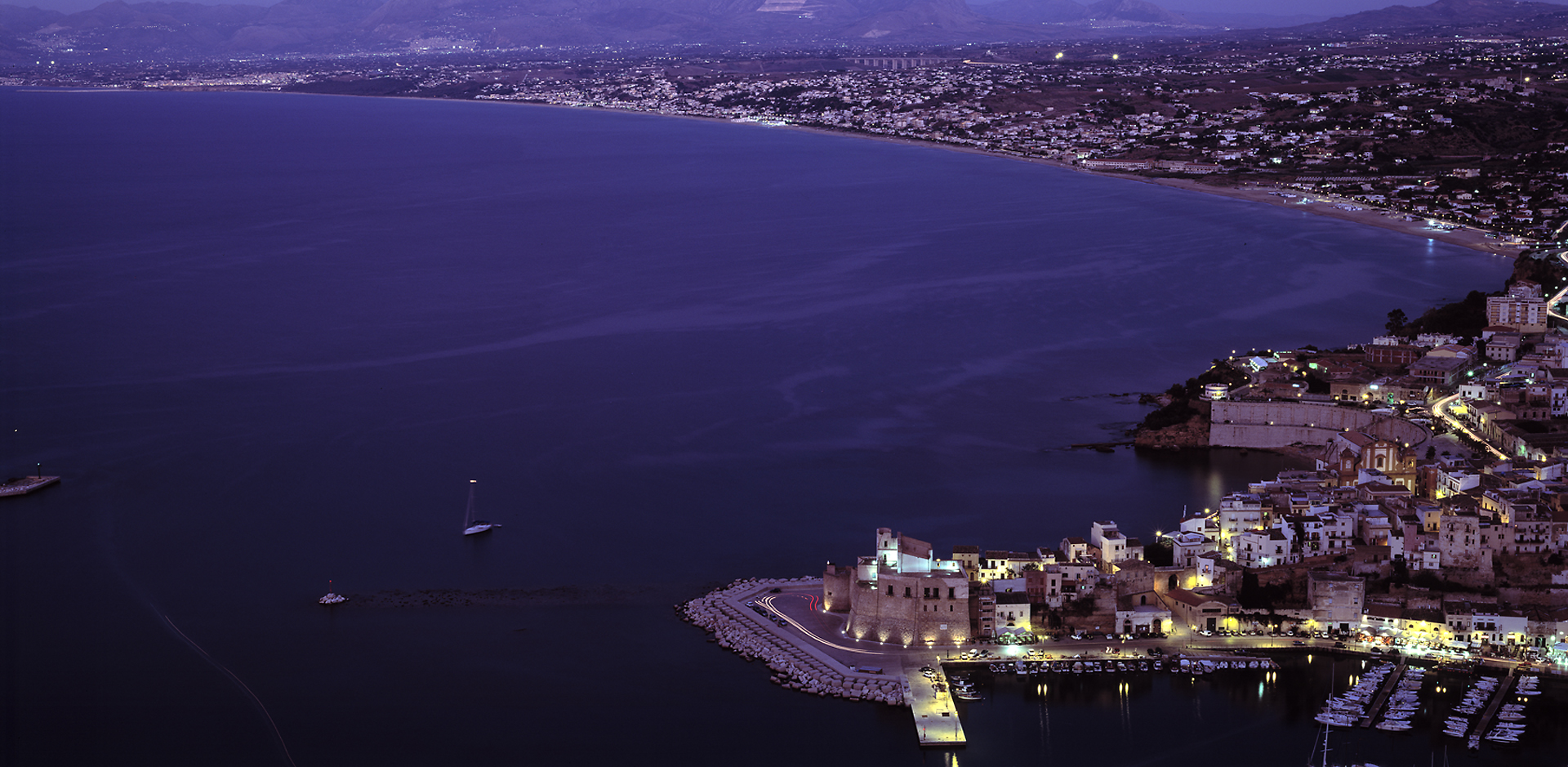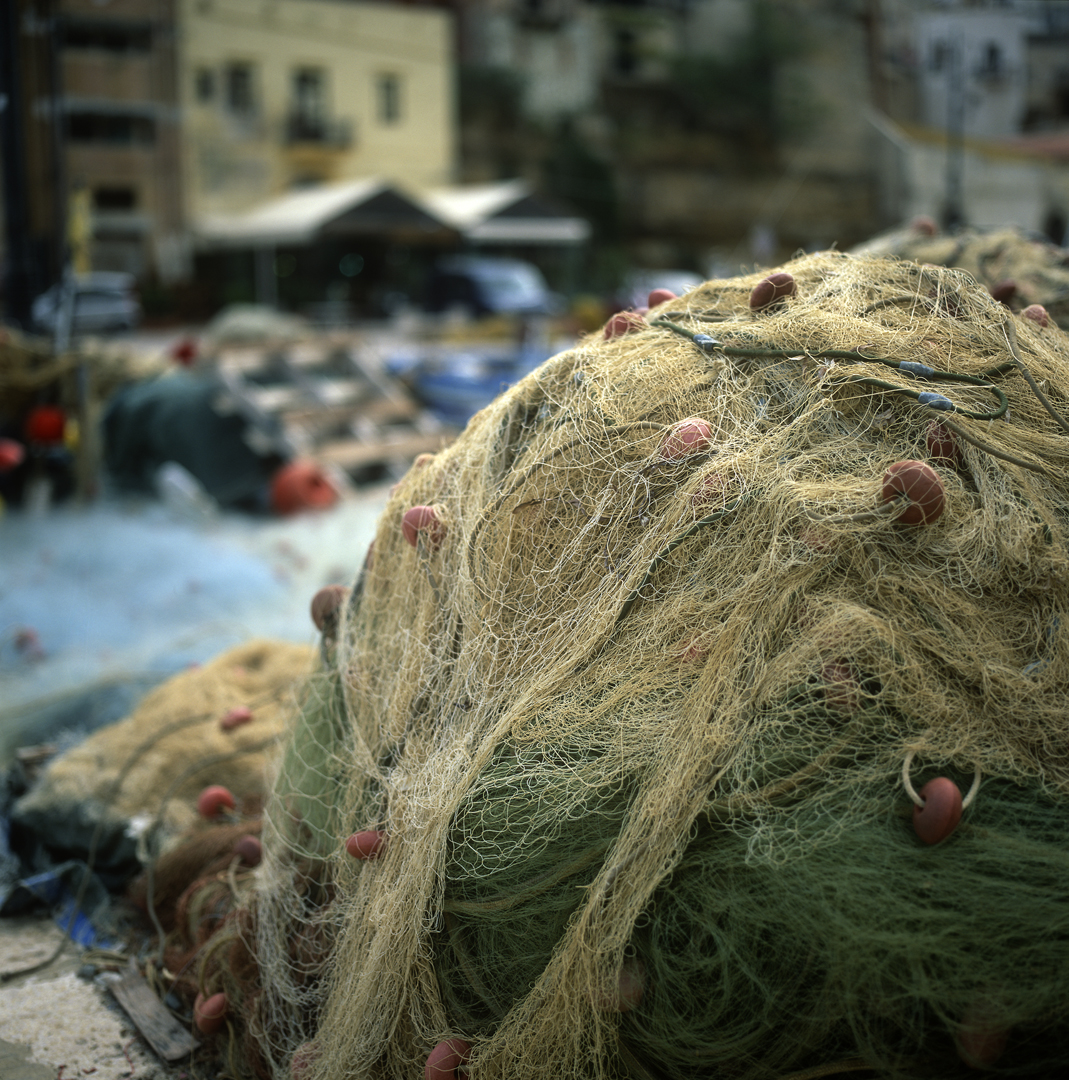Approaching northern Sicily by air is spectacular. No photographs or TV programs about travel in Sicily will prepare you for the landscape of big rugged mountains right beside very blue sea.
At Palermo airport there was the usual Italian muddle, where it took about three quarters of an hour for our bags to appear. There were a lot of teenage girls waiting for their bags and the warning buzzers kept sounding on alternate belts, whereupon the girls would all shriek and run to that belt. While they shrieked and ran I just stayed put by the original one and eventually the miracle of the baggage occurred. Having had a couple of bad but not catastrophic luggage experiences in Italian airports, we always regard it as slightly miraculous when the bags do arrive. We have taken to calling it Il Miracolo di San Bagagio.
After finding our way to the off-airport car hire depot, we drove west for about forty minutes along the coast to the town of Castellammare del Golfo, where we met our host, whom I shall call Candido (I don’t have his permission to use his real name, and I wouldn’t want to annoy him; being Sicilian he might have influential friends).
Candido was actually charming and urbane, and while we were getting shown around the house I asked him where the nearest supermarket was. He not only gave me detailed instructions on how to get there but rang the owner to see if it was open, because he had “two Australian tourists who needed supplies”. The owner – one Franco – apparently replied that he was closed and having his lunch but that he would reopen at 4pm. This did not surprise us as outside big cities (and even in them, to an extent) Italian businesses tend to close in the middle of the day so the owners and employees can go home for lunch.
So we did a bit of unpacking then when 4pm came we headed out. We weren’t too surprised to find that at about a quarter past four the supermarket wasn’t yet open, because we were pretty sure that the owner would be running on Sicilian time, so we went for a bit of a drive in the immediate area which has a famous scenic attraction in the form of a disused Tuna factory (yes, really) in a village called Scopello. The Mediterranean tuna stocks are almost all fished out now, by Spanish and even Japanese fishing fleets, but until the 1960s the migrating tuna would be caught off western Sicily by blokes in small boats. The tuna factories are now mostly ruins, or like this one have been converted into picturesque restaurants and B&Bs.

On return we found the supermarket open. It was a pretty small place with the sort of limited stock that you would find in an Australian holiday resort, except that it had quite a good bottle shop stocked with obscure (to me) local wines and a delicatessen filled with most interesting things. Apart from various essentials we also bought some olives and some magnificent pecorino stagionato (aged sheeps’ milk cheese). As we queued at the checkout the proprietor was quizzing the two German (or Dutch or Danish) girls in front of us about whether they had far to travel in the heat with their cold goods and whether they needed an insulated bag. They spoke no Italian and he spoke nothing else so there was no mutual comprehension going on, and I stepped in and translated into English for them.
I’m not sure I helped much but that formed a bit of a bond with the proprietor, and so I said in Italian “excuse me, are you Signor Franco?”. Yes, he said, cautiously. I explained that we were staying with Candido. Light dawned. “Candido, yes, he telephoned.” More light. “AAAH! AUSTRALIANI!” he bellowed. There was a brief shocked silence in the supermarket, as heads turned. It turned out that Franco has an uncle in Sydney. Or possibly four uncles, we were having a bit of trouble following him at that point. Anyway, on the strength of that indissoluble link between us he suddenly ducked off as we packed our groceries, and reappeared with a bottle of fortified white wine which he pressed on us as his welcoming gift. Sicily is that sort of place, we think. We tried the wine later and it was an excellent dessert wine, a bit like an Australian liqueur muscat but lighter.
We were closer to North Africa than to the Italian mainland, and that fact was clearly shown that night when the Scirocco started blowing. That is the hot wind from the Sahara, and it is very hot, and it is a very strong wind. It fairly whistled round the eaves all night. I don’t think it got much below 35 degrees all night.
The next day we visited Castellammare. The town itself is built around a pretty little port of considerable antiquity. The fort on the headland is originally Arab, with Norman accretions, but doubtless there would have been something there before the Arabs arrived.


We ate a memorable meal – not very expensive, and for me at least, the second most enjoyable dish I have ever eaten in Italy (the best was an octopus stew in a coastal trattoria south of Otranto). “Spaghetti in Sicilian sauce” may not sound like much, especially when Sicilian sauce turns out to be just tomatoes, garlic, parsley, olive oil, roasted almonds, pepper and salt, but it was intensely flavoured and really delicious. Lou had a very typical Sicilian dish – Busiate (a kind of curly pasta) con Sarde e Finnocchi – pasta with sardines, wild fennel, pine nuts, currants and tomato. The currants are very much an Arab influence.


One Reply to “Il Miracolo di San Bagagio”